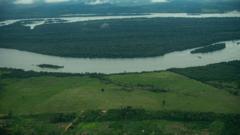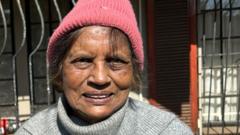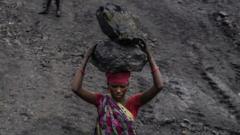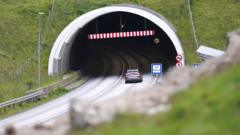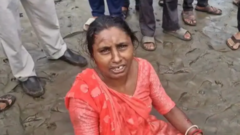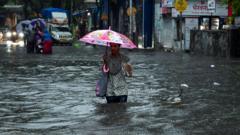Despite being next to one of Latin America's largest solar installations, Pampa Clemesí's residents live in darkness. While the Rubí solar plant powers numerous homes, local infrastructure issues prevent access to this energy supply, raising questions about equity in renewable energy distribution.
The Dark Side of Solar Power: Pampa Clemesí's Ongoing Struggle for Electricity
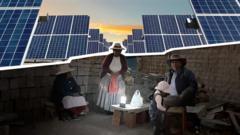
The Dark Side of Solar Power: Pampa Clemesí's Ongoing Struggle for Electricity
Residents of Pampa Clemesí, adjacent to Peru's largest solar complex, continue to live without electricity, highlighting the disconnection between renewable energy production and local access.
Residents of Pampa Clemesí, a village in southern Peru, live under the shadow of the Rubí solar complex, but they remain cut off from its power. Each morning, Rosa Chamami begins her day by igniting cardboard passed to her from a neighboring solar plant, using refuse instead of solar energy. Rubí and Clemesí, two of the largest solar facilities in Latin America, have transformed the Moquegua region with their vast array of solar panels, yet the village, located just 600 meters away, remains disconnected from the national grid.
Despite Rubí generating an impressive 440 GWh annually, enough energy for 351,000 homes, the 150 villagers continue to rely on flashlights as their only source of light. The paradox is striking; while Peru is embracing renewable energy—experiencing a 96% increase in renewable electricity production in 2024—the residents lack basic infrastructure to tap into this progress.
Orygen, the company operating the Rubí plant, asserts its commitment to linking Pampa Clemesí to power. They claim to have fulfilled their responsibilities by constructing a dedicated line and installing 53 power towers; however, the last crucial step—connecting individual homes to this line—depends on the government, which has yet to initiate work set to begin as early as March 2025. Efforts to contact the Ministry of Mines and Energy for comment yielded no response.
Residents voicing their fears and frustrations recall struggles with basic amenities like electricity, which affects even something as simple as charging a phone. Many homes consist of makeshift materials, and with no water or sewage systems, living conditions are dire. According to 70-year-old Pedro Chará, the absence of reliable electricity has driven away most residents since the pandemic. Without a power source, villagers utilize wood and kerosene for cooking, risking respiratory illnesses, while their social lives are restricted to gatherings by torchlight.
As twilight falls, Rosa prepares dinner with her neighbors, their faces illuminated only by the faint glow of a solar torch. They hope for government action to rectify their long wait for electricity. “Without it, we can’t build a future,” laments Pedro. Pampa Clemesí remains a case study of the disconnect between renewable energy advancements and the necessity for equitable infrastructure, as residents wait for the day when the abundant sunshine they cherish will finally bring light into their homes.



